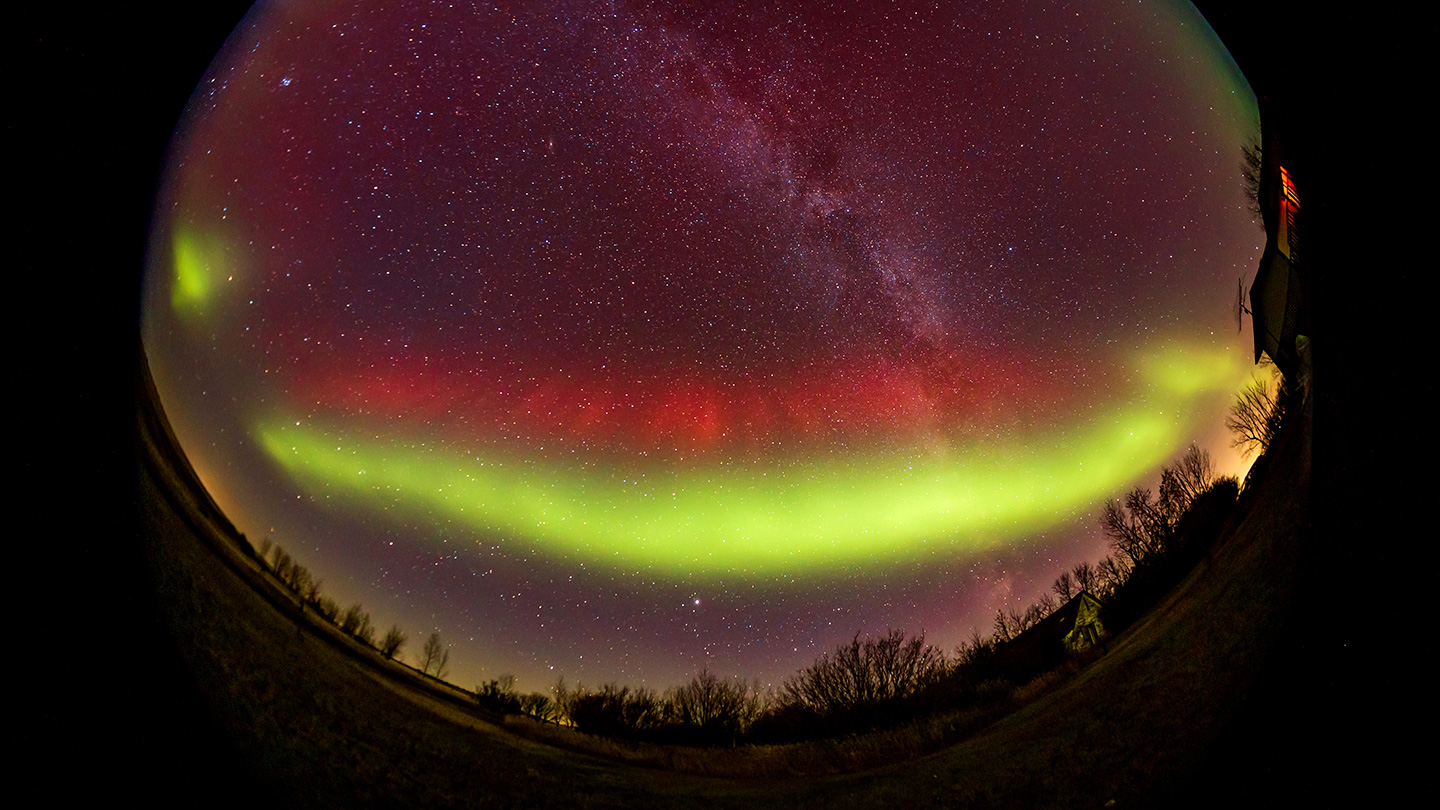November 16, 2023
Unveiling the Mysteries of Stable Auroral Arcs: A Celestial Spectacle at the Indian Astronomical Observatory

Introduction
- Recently, the Indian Astronomical Observatory (IAO) in Ladakh has captured the attention of the world by showcasing stunning images of a rare red-colored aurora, known as a Stable Auroral Arc (SAR). This celestial event, marked by its mesmerizing beauty, unfolded during a potent G3-class geomagnetic storm, offering a unique and unconventional display that has left a celestial mark across several regions worldwide.
Exploring Stable Auroral Arcs (SAR)
Rare Phenomenon
- SAR is a distinctive atmospheric occurrence observed specifically during a powerful G3-class geomagnetic storm. This rare phenomenon sets itself apart from the typical auroras generated by the collision of space-borne charged particles with the Earth’s atmosphere.
Unconventional Origins
- Unlike conventional auroras, SAR arcs have a distinct genesis. They serve as a sign of the transfer of heat energy into the upper atmosphere from Earth’s ring current system. The ring current, a circular pathway carrying massive electrical currents encircling our planet, plays a pivotal role in the formation of these captivating arcs.
Sign of Energy Flow
- SAR arcs, acting as indicators of energy flow, reveal the dynamic interplay between the ring current system and the upper atmosphere. During the recent geomagnetic storm, the ring current experienced dynamic charging, fueled by prolonged intense geomagnetic activity, leading to the manifestation of these unique and captivating SAR arcs.
Global Impact
- The recent celestial display at IAO has not only enthralled observers locally but has also made its celestial mark across several regions globally, showcasing the far-reaching impact of this extraordinary event.
Understanding the Formation Process
Solar Wind Interaction
- The formation of auroras, including SAR arcs, initiates with the sun emitting charged particles from its corona, creating solar wind. As these charged particles collide with Earth’s ionosphere, the captivating aurora begins to take shape, offering a breathtaking visual spectacle.
Northern and Southern Counterparts
- In the Northern Hemisphere, this phenomenon is recognized as the northern lights or aurora borealis, while in the Southern Hemisphere, it goes by the name southern lights or aurora australis. The distinct appearance in different hemispheres is attributed, in part, to the intricate interplay between the sun’s magnetic field and Earth’s magnetic field.
Magnetic Dance
- The varying appearance of auroras in different hemispheres is a result of the intricate dance between the sun’s magnetic field and Earth’s magnetic field. This magnetic interplay contributes to the unique and captivating display of auroras, adding to the celestial wonders that grace our planet.
Conclusion
In conclusion, the recent revelation of Stable Auroral Arcs at the Indian Astronomical Observatory not only adds to the beauty of celestial events but also provides insights into the dynamic relationship between geomagnetic storms, the ring current system, and the upper atmosphere. This extraordinary occurrence serves as a reminder of the intricate connection between our planet and the cosmos, offering a visual feast that captivates observers worldwide.
January 30, 2025
January 20, 2025
January 14, 2025
